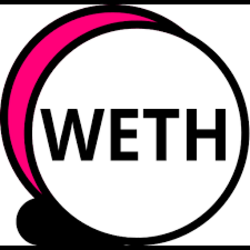|
thisCrowd - Audio Read
Getting your Trinity Audio player ready...
|
Ledger, a well-known hardware wallet firm, is making headlines once again. This time, they’re rolling out a groundbreaking solution that’s stirring up quite the controversy. But before we dive into the heart of the matter, let’s start from the beginning.
The Unveiling of Ledger Recover
On October 24, Ledger made a big splash by officially announcing the launch of “Ledger Recover,” a cloud-based private key recovery service. It’s a move that’s been met with both excitement and skepticism within the crypto community.
Powered by blockchain protection platform Coincover, Ledger Recover is a paid subscription service designed to offer peace of mind to cryptocurrency enthusiasts. It allows users to safeguard their Secret Recovery Phrase (SRP), which is a vital piece of the crypto puzzle. The SRP consists of a unique list of 24 words, acting as a guardian of your private keys and, in turn, your crypto assets.
The Inner Workings of Ledger Recover
Now, you might wonder how this service operates and whether it’s secure. Ledger explained that a Ledger wallet encrypts a complex “string of random 1s and 0s” to generate the SRP. This encrypted string is then divided into three pieces, and these fragments are used to back up the SRP.
The critical aspect here is that Ledger Recover only interacts with these fragments, never touching your SRP in its readable form. Moreover, these encrypted SRP fragments are distributed through end-to-end encrypted channels, involving three independent companies: Ledger, Coincover, and EscrowTech.
This robust setup ensures the highest level of security, eliminating any single point of failure in the process. Your crypto assets are, therefore, safeguarded like the treasures they are.
Ledger Recover: A Safety Net
The brain behind Ledger Recover, Charles Guillemet, the Chief Technology Officer of Ledger, emphasized that this service is for those who want an extra layer of resilience. It’s a safety net in case your SRP is ever lost or destroyed, offering peace of mind to even the most cautious crypto users.
However, here’s the twist: Ledger Recover is entirely optional. If you prefer to stick with your Ledger as is, nothing will change. Your choice, your rules.
Compatibility and Availability
At launch, Ledger Recover is compatible with Ledger Nano X, and the integration with Ledger Stax and Ledger Nano S Plus is on the horizon. It’s important to note that Ledger Nano S users will have to wait for compatibility, as mentioned in the Ledger Recover FAQ.
As for availability, initially, Ledger Recover caters to passport or identity card holders in the United States, Canada, the United Kingdom, and the European Union. But don’t fret if you’re not in these regions; Ledger has plans to expand its coverage and support for more types of documents.
Identity Verification: Not Your Typical KYC
Ledger emphasizes that its identity verification process is different from the Know Your Customer (KYC) checks carried out by centralized crypto exchanges. To use Ledger Recover, you’ll only need a valid, government-issued document. It’s a streamlined process, collecting significantly less information compared to the comprehensive KYC checks that can involve everything from revenue data to criminal activity records.
Pricing and Suspension Policy
Now, let’s talk numbers. Ledger Recover comes at a monthly subscription cost of $9.99, or approximately $120 annually. But here’s a noteworthy point: if you happen to miss a subscription payment, your subscription won’t be immediately terminated. You have a grace period of nine months to reactivate it, provided you pay an administration fee of 50 EUR along with any outstanding balance.
Ledger’s Journey
This rollout is a significant step for Ledger, and it follows a temporary pause in their recovery service in May 2023 due to community concerns. Pascal Gauthier, the CEO of Ledger, made it clear that they would only proceed once the open-source code was available. And they’ve certainly kept their word.
Trezor’s Approach
It’s worth noting that Ledger’s biggest competitor, Trezor, has taken a different path. They’ve opted for a physical backup solution and recently introduced the “Trezor Keep Metal,” a physical seed phrase recovery tool in October 2023.
In the ever-evolving crypto world, both Ledger and Trezor are charting their own courses, aiming to provide users with choices to suit their needs and preferences.
The Cryptocurrency Saga Continues
As the world of cryptocurrency continues to unfold, Ledger’s Ledger Recover has brought a new chapter into the story. With both support and skepticism from the crypto community, it’s clear that innovation in the crypto space is alive and well. The choice of whether to embrace this innovation is in the hands of crypto enthusiasts, each charting their unique journey through this digital financial frontier. Stay tuned for more updates as this exciting narrative evolves.
How it Works:
STEP 1: Identity Verification
The journey begins with the essential step of verifying your identity. To initiate Ledger Recover, you’ll need to provide a valid ID document and capture a selfie recording. It’s a straightforward process, ensuring your legitimacy in the world of crypto.
STEP 2: Creating the Backup
Once your identity is confirmed, it’s time to embark on the path of securing your crypto assets. Connect your Ledger device and grant approval for the creation of a backup for your Secret Recovery Phrase. This is a pivotal moment. Your Ledger device takes the entropy of your Secret Recovery Phrase, which is essentially a string of random 1s and 0s, and encrypts it.
This encryption is not your usual one; it’s like locking your secrets in a digital vault. Your encrypted entropy is then fragmented into three distinct pieces, all nestled safely within the Secure Element chip. These fragments, collectively, become the guardians of your Secret Recovery Phrase.
But here’s the magic: Ledger Recover only interacts with these fragments, never with your Secret Recovery Phrase in its readable form. Your secrets are safe and sound, tucked away in their encrypted fortress.
STEP 3: Securing the Backup
The security journey continues as the fragments come into play. These precious fragments are not just stored haphazardly; they’re meticulously protected. They embark on a journey of their own, taking a path that’s guarded by layers of encryption.
End-to-end encrypted and authenticated channels come into play, ensuring that the fragments reach the Hardware Security Modules (HSMs) of three independent companies—Ledger, Coincover, and EscrowTech. Each fragment, on its own, is essentially a puzzle piece without a picture. They are useless sets of random numbers, making them utterly indecipherable to anyone without the complete puzzle.
STEP 4: Linking the Backup to Your Verified Identity
The final piece of this intricate puzzle involves linking the backup to your verified identity. Remember Step 1, where your identity was confirmed? Well, here’s where it all comes together. Each fragment, so meticulously secured in Step 3, is linked to your verified identity.
This link ensures that only you, and you alone, have the authority to request the retrieval of the backup. It’s a tightly woven web of security, where your identity and your crypto assets are connected in an unbreakable bond.
And there you have it—a journey through Ledger Recover, a service that not only safeguards your crypto assets but also your peace of mind. It’s a new chapter in the ever-evolving world of cryptocurrency, offering a level of security and control that’s truly remarkable.















































